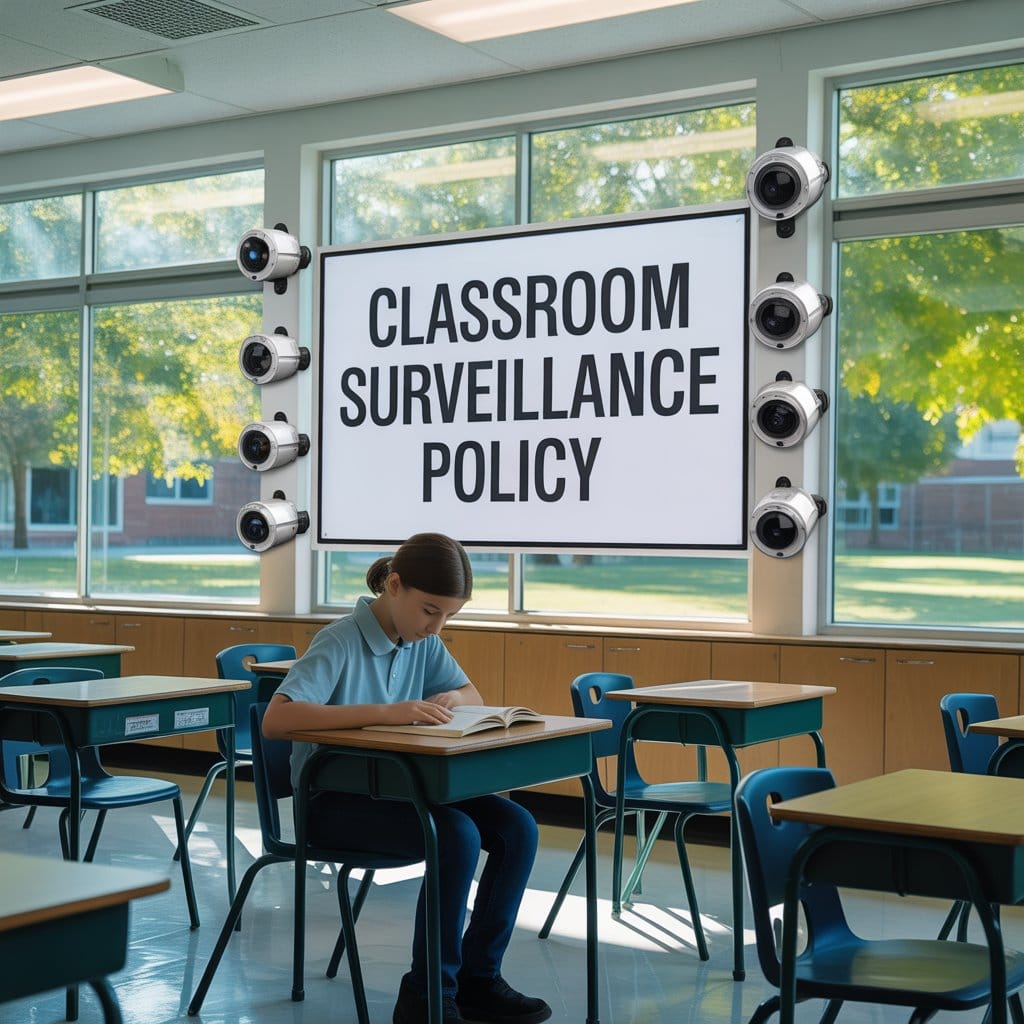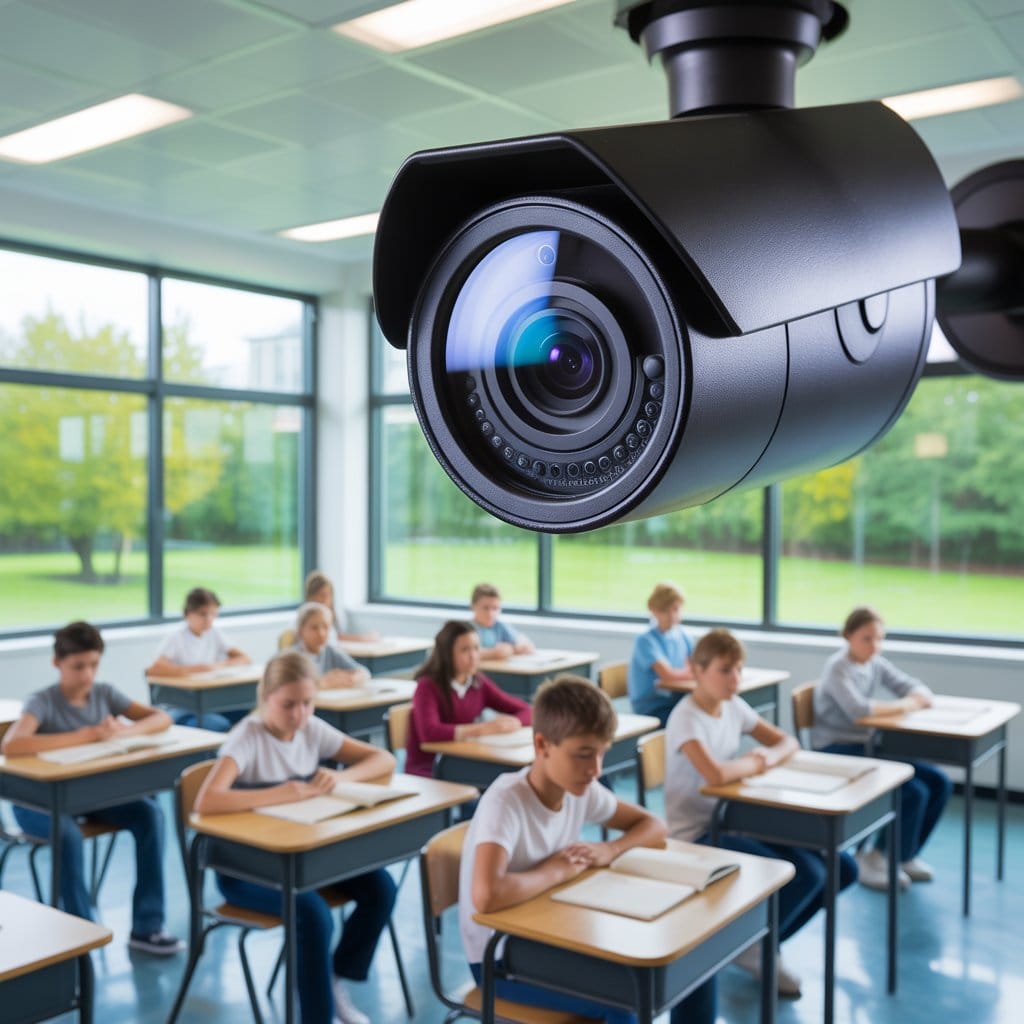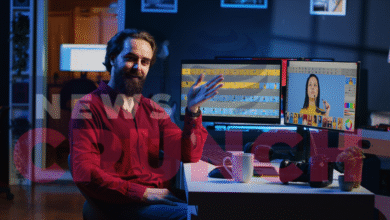As of 2025, whether cameras are legal in school classrooms depends on specific state and local laws. Some states permit cameras in classrooms for safety or instructional monitoring, while others impose strict limitations or ban them altogether. The key legal concern often comes down to privacy and consent—do teachers, students, and parents know about the surveillance and agree to it? This makes the question, “Is it illegal to have cameras in classrooms?” a matter of location and policy.
In areas where laws permit surveillance, security cameras are allowed in school classrooms only under well-defined conditions, such as prior notification and purpose-specific use. Schools must consider how these policies impact learning environments, student trust, and staff rights. The goal should always be to improve safety without compromising legal or ethical standards.
Understanding Legal Framework for Classroom Surveillance
Both federal and state-level laws shape the legal foundation for classroom surveillance in schools. FERPA (Family Educational Rights and Privacy Act), a key federal law, doesn’t ban surveillance directly but regulates how footage containing student information is handled, stored, and shared. Recording students without proper consent could violate FERPA or other local laws, depending on how the footage is used.
Another major factor is consent. In many states, schools must notify parents, staff, or both before installing cameras. This raises the question, “Are security cameras allowed in school classrooms?” Yes, but usually only if the law is followed carefully. Schools must understand the distinction between using cameras for education and using them for surveillance to avoid legal trouble.
Current Legal Status Across States
In the United States, the legality of classroom surveillance varies from state to state. Some states have clear laws that permit cameras under specific conditions, while others restrict or ban their use. For example, Texas allows cameras in special education classrooms if requested by parents, whereas California enforces stricter privacy protections. These differences make it difficult to answer universally, “Is it illegal to have cameras in a classroom?”
Many schools do have cameras in classrooms, especially where safety, discipline, or remote learning is prioritized. But unauthorized recordings—especially those taken without notice or consent—can result in lawsuits or legal penalties. Staying informed about your state’s current laws is critical for school leaders and educators planning to implement surveillance.

State-by-State Legal Landscape
Looking at the state-by-state legal landscape, it’s clear that regulations around classroom cameras are far from uniform. States like Georgia and Florida have embraced legislation that supports camera use for student safety and teacher protection. Meanwhile, states like New York require school districts to negotiate with teachers’ unions or obtain parental approval before installing classroom surveillance.
In most cases, states don’t completely ban surveillance but instead lay out compliance steps. So, are there cameras in classrooms? In many places, yes—but their use depends on how well a school follows state-specific rules. Consulting legal professionals or state education departments is a smart step for any school looking to avoid legal risks while implementing cameras.
Read Also: Are Classroom Cameras Legal in Schools 2025
Legal Implementation Guidelines for Schools
To legally install cameras in classrooms, schools must follow clear guidelines. First, check whether security cameras are allowed in school classrooms in your state. Next, schools must secure consent from parents, teachers, or guardians where applicable. Cameras should never be placed in areas like restrooms or locker rooms where privacy is expected under all circumstances.
A written policy is essential—it should clearly state the reason for surveillance, how recordings will be handled, who can access them, and for how long they’ll be kept. Open communication is just as important. Posting signs and informing everyone involved helps build trust. Is it illegal to have cameras in a classroom? Not if you follow all the legal and ethical requirements from the start.
FAQs
Q1: Are security cameras allowed in school classrooms?
Yes, but only in states where surveillance is permitted and proper notice or consent is given.
Q2: Is it illegal to have cameras in classrooms?
It depends on your state. Some allow it with clear regulations; others restrict or prohibit it.
Q3: Can schools record without telling teachers or students?
In most cases, no. Covert recording usually violates privacy laws and is not recommended.
Q4: Why do some schools use classroom cameras?
Reasons include safety, behavioral monitoring, teacher protection, or support for special education.
Q5: Are there cameras in classrooms today?
Yes, particularly in schools with defined policies and legal approvals in place.
Professional Implementation Recommendations
When installing cameras in classrooms, schools must be both legally sound and ethically responsible. Start by working with legal experts to ensure all policies meet federal and state laws. Outline a clear purpose—whether for safety, instructional support, or monitoring—and share that purpose with staff and families. Ensure that all equipment is placed only in permitted areas and that recordings are securely stored.
Transparency is critical. Inform everyone affected, and post clear signage. Maintain ongoing communication to address concerns and adjust practices as laws evolve. While it’s not necessarily illegal to have cameras in classrooms, missteps in policy, placement, or communication can cause serious issues. Done properly, surveillance can support school safety and accountability without crossing legal or ethical lines.






